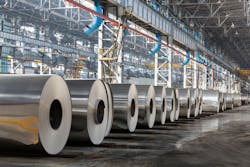Programmable logic controllers (PLCs) and supervisory control and data acquisition (SCADA) systems contribute to the control, monitoring and enhancement of processes across various industries such as manufacturing, energy and water management.
PLCs manage real-time control tasks based on signals from field devices and sensors, focusing on specific machinery or equipment. On the other hand, SCADA systems supervise, acquire data, and analyze information at a higher level, acting as a graphical user interface for operators. Together, they form the backbone of industrial operations, reducing the need for manual intervention, minimizing errors, ensuring safety and enabling remote supervision for data-driven decision-making.
A programmable logic controller is a device installed to monitor system sensors, collect data and gather essential information about the system's operation. PLCs can also take simple actions by activating outputs when specific pre-programmed limits are reached. They are versatile and easy to program, making them suitable for various industrial situations. PLCs have evolved to replace older relays and timers in industrial machines.
A SCADA system serves as the brain of a plant's operations. It typically operates as software on a computer, acting as a link between operators and industrial machines through a human-machine interface (HMI). SCADA systems often collaborate with PLCs and other devices, with information from PLCs and remote terminal units (RTUs) flowing into the system. The HMI allows users to monitor processes, make changes and adjust programming as needed.
In a large plant or factory with numerous machines, PLCs and SCADA play distinct yet complementary roles. The PLC acts as the machine's brain, managing specific parts to ensure proper actions at the right times. On the other hand, SCADA serves as the overseer, existing mainly as software that monitors and manages the entire factory, utilizing both hardware and software components.
PLC and SCADA systems find applications in diverse industries to enhance process control and management:
● Manufacturing: PLCs control individual machines, while SCADA monitors and helps workers oversee the entire manufacturing process.
● Energy and utilities: PLCs manage machines like generators for electricity, and SCADA provides oversight to operators, aiding in decision-making.
● Water and wastewater management: PLCs control pumps and filters in wastewater treatment, while SCADA oversees the entire process, allowing operators to monitor and address issues.
When PLCs and SCADA work together, they form an automated system for scheduling maintenance tasks, constituting the core of a predictive maintenance plan. The process involves sensors transmitting data to PLCs, which convert the data for use by SCADA software. Operators can view the data through the software's HMI, and, if certain limits are exceeded, a maintenance work order is generated. This collaborative setup allows SCADA software to manage the system, while PLCs serve as points for relaying information and controllers for specific assets.
What distinguishes PLCs from SCADA systems? PLCs focus on real-time control of individual devices or small processes, while SCADA systems take a broader approach, overseeing, gathering data and analyzing information for more extensive industrial processes.
Can PLCs and SCADA systems be combined? Yes, merging PLC and SCADA systems enhances control and monitoring capabilities, facilitating better decision-making and optimization of processes.
How does a distributed control system (DCS) differ from SCADA? DCS focuses on real-time control, ensuring precision in a process, while SCADA emphasizes data gathering, creating visual representations and overseeing processes from a distance.
Marianne Sabado is a client education specialist at NexGen. Contact her at [email protected].
About the Author

Leaders relevant to this article:

